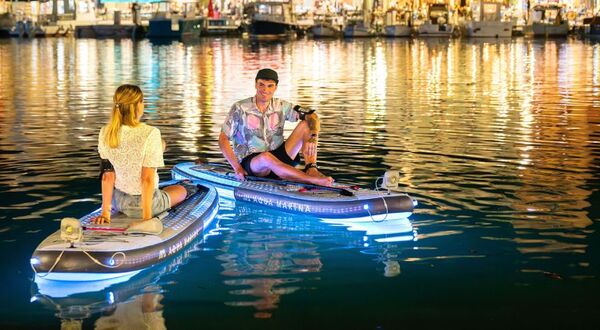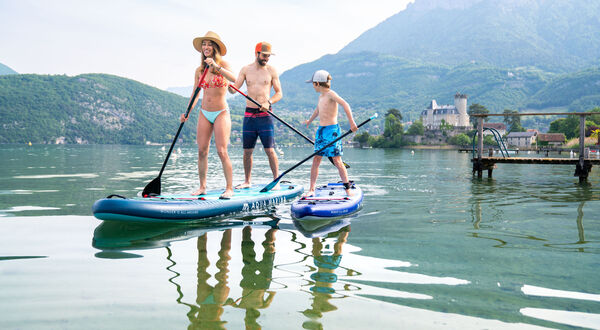- +(905) 761-8930
- 570 Applewood Crescent Unit 2 Concord, Ontario L4K 4B4 Concord ON CA L4K 0C8

Kayaking has become increasingly popular as an exciting water sport that combines adventure with peace. Whether you're exploring calm lakes or tackling challenging whitewater rapids, having the right kayak can make a big difference. However, deciding between affordable options and investing in a reinforced kayak can be overwhelming.
Budget-Friendly Kayaking: Is a Reinforced Kayak Worth the Investment? will examine the advantages and disadvantages of reinforced kayaks compared to more budget-friendly alternatives. This guide aims to assist you in making a well-informed choice that suits your specific needs and preferences.
Reinforced kayaks, such as the Aqua Marina 2022 Betta-312 Recreational Kayak, are designed for versatility and user-friendliness. Made from top-quality materials, these kayaks are lightweight yet sturdy, making them suitable for different water conditions.
For those who prioritize comfort during long paddling trips, upgrading to a high back kayak seat with a spongy cushion could be advantageous.
On the other hand, if you're searching for a recreational kayak that caters to both beginners and experienced paddlers, the Aqua Marina Laxo-320 Leisure Kayak with its ultra-durable polyester hull might be just what you need.
Lastly, if you're seeking family-friendly activities, the Aqua Marina 2022 Betta-412 Recreational Kayak offers plenty of room for two while remaining easy to paddle.
Exploring the types of kayaks available can help you make an informed decision tailored to your needs. Here’s a breakdown:
Reinforced kayaks, such as the Aqua Marina 2022 Laxo-285 Recreational Kayak, stand out due to their robust construction and enhanced durability. These kayaks are designed with additional layers of material to improve strength and performance. The main characteristic of reinforced kayaks is their ability to withstand more rigorous conditions compared to standard models.
Choosing between reinforced and traditional plastic kayaks often comes down to balancing performance needs against budget constraints. The Laxo-320 Recreational Kayak and the Aqua Marina Betta Reinforced Kayak are excellent examples of reinforced kayaks that offer a blend of durability and performance. For those seeking a larger option, the Laxo-380 Leisure Kayak provides ample space while maintaining high durability standards.
Lightweight Construction
Reinforced kayaks, often made from materials like fiberglass or carbon fiber, are significantly lighter than traditional plastic kayaks. This lightweight design makes them exceptionally easy to handle, both in and out of the water. For instance, the Aqua Marina 2022 Steam-412 Versatile Whitewater Kayak, made from reinforced materials, showcases this benefit perfectly. Transporting your kayak to the launch site becomes less of a chore, saving you energy for what really matters—paddling.
Enhanced Performance
When it comes to performance, reinforced kayaks shine. Their construction allows for superior tracking and responsiveness, essential for navigating various water conditions efficiently. Whether you're gliding through calm lakes or tackling more challenging waters with a Ripple-370 Recreational Canoe designed for stability and comfort, reinforced kayaks offer a level of control that enhances your paddling experience.
Durability and Longevity
One of the standout features of reinforced kayaks is their durability. These kayaks are designed to withstand dents and punctures far better than their polyethylene counterparts. This durability translates into longevity, making them a wise investment for those who plan on kayaking frequently or in rougher conditions.
Despite their numerous advantages, reinforced kayaks do come with some drawbacks:
Balancing these factors will help you determine if a reinforced kayak aligns with your kayaking goals and budget.
Exploring budget-friendly kayaking options introduces a fantastic gateway for beginners and casual paddlers. One standout choice is the rotomolded polyethylene kayak.
Polyethylene kayaks are crafted from high-density polyethylene (HDPE) using a rotational molding process. This method yields several advantages:
When comparing reinforced kayaks with budget-friendly options, it's crucial to weigh durability against weight:
These considerations highlight why rotomolded polyethylene kayaks remain a popular choice for those looking to get into kayaking without breaking the bank.
When going through the many choices in a buying a kayak guide, several factors are crucial. Here are some tips for buying a kayak:
Taking these considerations into account ensures you make an informed decision tailored to your needs and preferences.
Making an informed decision about your kayak purchase hinges on your personal needs and preferences. Whether you're drawn to the advanced features of a reinforced kayak or leaning towards a budget-friendly option, understanding both can help you choose wisely.
Is a reinforced kayak worth the investment? Consider your paddling goals, frequency of use, and budget constraints. Explore different kayak options to find the perfect fit for your adventures.
Start your kayaking journey today – adventure awaits!


